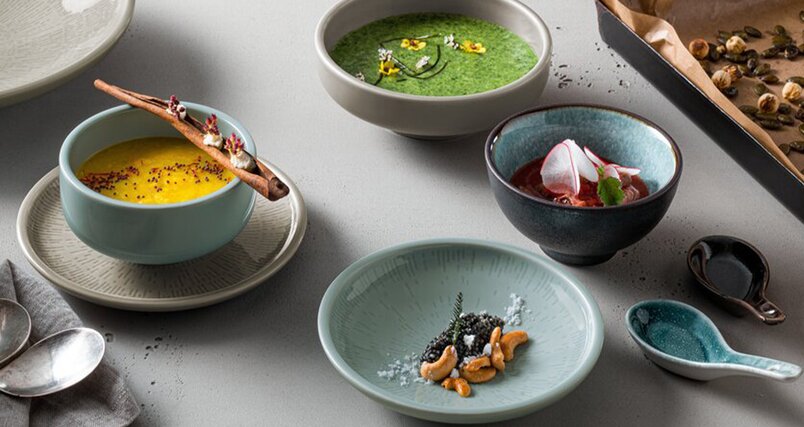What does guilt-free kitchen mean?
Ideally, food should be sustainable, organic, fair, ecological, natural and healthy. But let’s be honest: no food can meet all of these requirements 100 percent. Nevertheless, "guilt-free" is in vogue. There is no single definition – guilt-free kitchen is interpreted a little differently each time, depending on which aspect should take center stage. For some, it is more about saving natural resources, for others it is more about a diet that is free from unhealthy ingredients such as overcultivated wheat or refined sugar.
Healthy and sustainable ingredients
In any case, healthy and/or sustainable ingredients play a central role in the guilt-free trend. These include some unconventional foods that provide a surprise on the plate and offer new taste experiences in addition to sustainability or health aspects.
Sorghum or teff as gluten-free alternatives to wheat
Sorghum and teff are healthy alternatives to wheat and are popular gluten-free options for people with coeliac disease or gluten intolerance. Sorghum, a type of millet, is rich in nutrients and antioxidants and offers a similar texture to conventional flour when milled. It is excellent for making bread, cakes and other baked goods. Teff, on the other hand, although small in grain size, is large in nutritional value. It is traditionally used to make Ethiopian injera, but can also be used for pancakes or bread.
Sorghum and teff are also sustainable ingredients. Sorghum is particularly robust and drought-tolerant, making it an ideal crop in arid and semi-arid areas. It requires significantly less water than wheat and is resistant to many pests and diseases, minimizing the use of chemical pesticides. Teff can thrive in different soil and climatic conditions, allowing it to be grown in different parts of the world. It is also resistant to many diseases and pests and requires little fertilizer, making it an environmentally friendly choice.
Algae, fish roe or sea urchins to reduce salt
Seaweed, fish roe and sea urchins are healthy and excellent natural flavor enhancers. Seaweed, especially kelp, offers an intense umami flavor that adds depth to dishes without the need for additional salt. Fish roe and sea urchins, often used in Japanese cuisine, also bring a salty sea flavor that goes particularly well with sushi and other fish dishes.
Grasshoppers or mealworms as protein sources
Insects such as grasshoppers and mealworms are traditional food sources in many cultures and are gaining popularity in Western gastronomy as sustainable sources of protein. They are rich in protein and contain important vitamins and minerals. In the guilt-free kitchen, they can be roasted, deep-fried or used as a base for burger patties.
Fermented rice with the super mushroom koji
Fermented rice, cultivated with the koji mushroom, is the basis for many traditional Japanese products such as miso and amazake. These ingredients are essential for the umami flavor dimension in the kitchen and offer health benefits through their probiotic properties. They can be used in a variety of ways, from marinades to soups and drinks.
Hemp seeds for bread, salad, pesto or soups
Hemp seeds are another excellent guilt-free ingredient, characterized by their high content of omega-3 and omega-6 fatty acids, protein and fiber. They can be used raw in salads, baked into hemp bread or used as the basis for a nutrient-rich pesto. They also provide a nutty note and additional texture in soups.
Skillfully presenting a guilt-free kitchen
Guilt-free cooking provides surprising culinary experiences. However, these experiences should also be underlined by appropriate presentation. The right tableware for the guilt-free kitchen can be found in the avant-garde EMBRACE collection from PLAYGROUND: the nest-like, almost protective look radiates a sense of security and originality. It also creates an aha effect: you literally have to discover the food, as it is slightly concealed by the overhang, which is particularly noticeable in the large bowl. The contrasting material also contributes to the surprise effect: It is smooth on the inside, but naturally rough on the outside for a tactile experience that is pleasant to the touch.
















